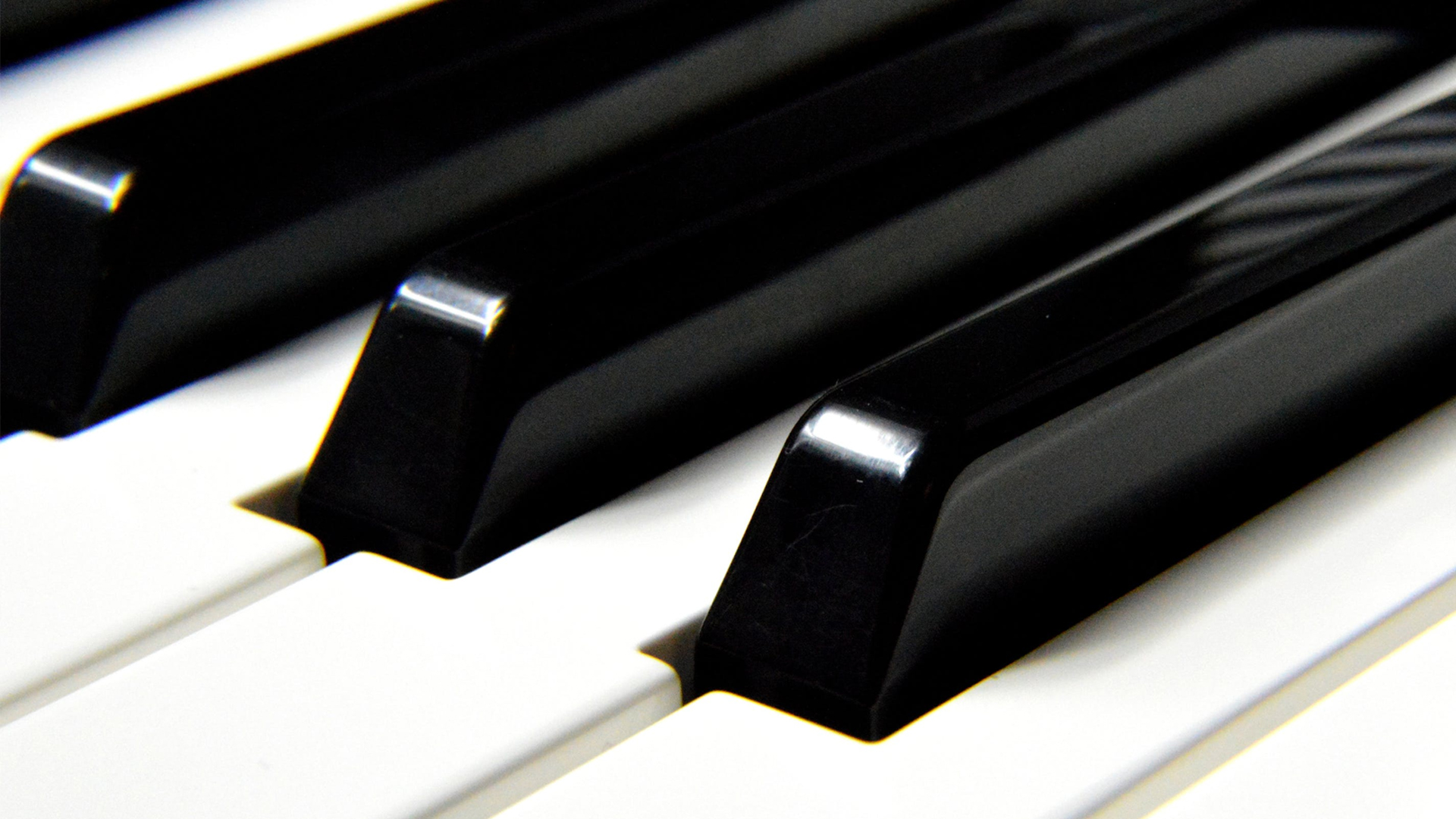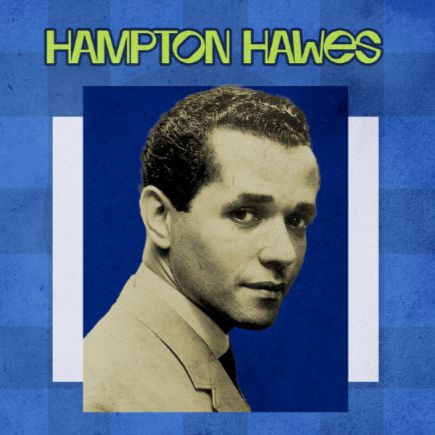Hampton Hawes, le chant du bebop au piano
Parmi les pianistes qui ont marqué l’histoire du jazz moderne, Hampton Hawes occupe une place singulière. Issu de Los Angeles, il incarne la rencontre entre la rigueur harmonique du bebop et l’énergie créative de la côte Ouest, forgeant un style où se conjuguent inventivité, swing et intensité expressive.
Formé dans une famille de musiciens – son père était pasteur et sa mère pianiste d’église – Hawes grandit dans une atmosphère où le gospel et le blues nourrissent sa sensibilité. Très tôt, il se passionne pour Charlie Parker et Bud Powell, dont il absorbe les innovations, tout en affirmant une voix personnelle. À peine sorti de l’adolescence, il fréquente les clubs de Central Avenue à Los Angeles, haut lieu de la scène afro-américaine, où il joue avec Dexter Gordon, Wardell Gray ou Art Pepper.
Le début des années 1950 marque son entrée sur le devant de la scène. Membre de l’orchestre de Howard McGhee, puis compagnon de tournée de Charlie Parker, Hawes devient rapidement l’un des pianistes les plus recherchés. Son toucher limpide, ses lignes rapides et précises, et son sens aigu du rythme séduisent autant les musiciens que le public.
En 1955, il enregistre l’album Hampton Hawes Trio, Vol. 1 aux côtés de Red Mitchell et Chuck Thompson: un disque fondateur, qui révèle la clarté de son jeu et sa capacité à faire chanter chaque phrase. Suivront All Night Session! (1956), enregistré avec Jim Hall et Red Mitchell, où son énergie et son inventivité atteignent des sommets, et Four! (1958), chef-d’œuvre en quartet avec Barney Kessel, Shelly Manne et Red Mitchell.
La trajectoire de Hawes est marquée par les contrastes. Encensé pour son talent, il connaît aussi des périodes d’ombre liées à ses problèmes de dépendance de l’héroïne. En 1958 il est condamné à 10 ans de prison au Texas. Il demande alors la grâce au président Kennedy et reçoit une réponse favorable en 1963, obtenant le troisième pardon de ce type en 40 ans. Il reprend sa carrière et enchaîne de nouveaux enregistrements, parmi lesquels The Sermon et Spanish Steps, témoignant d’une maturité renforcée.
Hampton Hawes, el canto del bebop al piano
Entre los pianistas que han marcado la historia del jazz moderno, Hampton Hawes ocupa un lugar singular. Nacido en Los Ángeles, encarna la fusión entre la rigurosidad armónica del bebop y la energía creativa de la Costa Oeste, forjando un estilo en el que se combinan inventiva, swing e intensidad expresiva.
Formado en el seno de una familia de músicos –su padre era pastor y su madre pianista de iglesia–, Hawes creció en un entorno en el que el gospel y el blues alimentaban su sensibilidad. Desde muy joven se sintió atraído por Charlie Parker y Bud Powell, de quienes absorbió las innovaciones mientras afirmaba una voz propia. Apenas adolescente, frecuentaba los clubes de Central Avenue en Los Ángeles, epicentro de la escena afroamericana, donde tocó con Dexter Gordon, Wardell Gray y Art Pepper.
El inicio de los años cincuenta marca su consolidación. Integrante de la orquesta de Howard McGhee y luego compañero de gira de Charlie Parker, Hawes se convirtió rápidamente en uno de los pianistas más solicitados. Su toque cristalino, sus líneas veloces y precisas y su agudo sentido rítmico cautivaban tanto a músicos como a público.
En 1955 grabó el álbum Hampton Hawes Trio, Vol. 1 junto a Red Mitchell y Chuck Thompson: un disco fundacional que revelaba la claridad de su estilo y su capacidad de hacer cantar cada frase. Siguieron All Night Session! (1956), con Jim Hall y Red Mitchell, donde alcanzó picos de energía e inventiva, y Four! (1958), obra maestra en cuarteto con Barney Kessel, Shelly Manne y Red Mitchell.
La trayectoria de Hawes estuvo marcada por contrastes. Aclamado por su talento, sufrió también períodos oscuros debido a su dependencia de la heroína. En 1958 fue condenado a 10 años de prisión en Texas. Solicitó el indulto al presidente Kennedy y lo obtuvo en 1963, un perdón excepcional, apenas el tercero en 40 años. Tras su liberación, retomó su carrera y grabó nuevas obras, entre ellas The Sermon y Spanish Steps, que dan cuenta de una madurez artística renovada.
Hampton Hawes, il canto del bebop al pianoforte
Tra i pianisti che hanno segnato la storia del jazz moderno, Hampton Hawes occupa un posto particolare. Nato a Los Angeles, rappresenta l’incontro tra la rigorosità armonica del bebop e l’energia creativa della West Coast, dando vita a uno stile in cui si fondono inventiva, swing e intensità espressiva.
Cresciuto in una famiglia di musicisti –il padre era pastore e la madre pianista in chiesa–, Hawes sviluppò presto una sensibilità nutrita dal gospel e dal blues. Si appassionò fin da giovane a Charlie Parker e Bud Powell, dai quali assimilò le innovazioni, pur affermando una voce personale. Ancora adolescente, frequentava i club di Central Avenue a Los Angeles, centro della scena afroamericana, dove suonò con Dexter Gordon, Wardell Gray e Art Pepper.
L’inizio degli anni Cinquanta segna la sua affermazione. Membro dell’orchestra di Howard McGhee e poi compagno di tournée di Charlie Parker, Hawes divenne rapidamente uno dei pianisti più richiesti. Il suo tocco limpido, le linee veloci e precise e il senso acuto del ritmo conquistavano musicisti e pubblico.
Nel 1955 incise l’album Hampton Hawes Trio, Vol. 1 con Red Mitchell e Chuck Thompson: un disco fondamentale che rivelava la chiarezza del suo stile e la capacità di far cantare ogni frase. Seguirono All Night Session! (1956), con Jim Hall e Red Mitchell, in cui raggiunse vertici di energia e inventiva, e Four! (1958), capolavoro in quartetto con Barney Kessel, Shelly Manne e Red Mitchell.
La carriera di Hawes fu segnata da contrasti. Acclamato per il suo talento, attraversò anche periodi oscuri a causa della dipendenza dall’eroina. Nel 1958 fu condannato a 10 anni di prigione in Texas. Chiese la grazia al presidente Kennedy e la ottenne nel 1963, un atto eccezionale, solo il terzo in 40 anni. Dopo la liberazione riprese la carriera, incidendo nuove opere come The Sermon e Spanish Steps, che testimoniano una maturità artistica accresciuta.
Hampton Hawes, the song of bebop at the piano
Among the pianists who shaped the history of modern jazz, Hampton Hawes holds a unique place. Born in Los Angeles, he embodied the meeting of bebop’s harmonic rigor and the creative energy of the West Coast, forging a style that combined inventiveness, swing, and expressive intensity.
Raised in a family of musicians—his father a minister and his mother a church pianist—Hawes grew up in an atmosphere where gospel and blues nourished his sensitivity. From an early age, he was drawn to Charlie Parker and Bud Powell, whose innovations he absorbed while affirming a voice of his own. As a teenager, he immersed himself in the clubs of Central Avenue in Los Angeles, the epicenter of the African American scene, where he played with Dexter Gordon, Wardell Gray, and Art Pepper.
The early 1950s marked his rise to prominence. A member of Howard McGhee’s orchestra and later a touring companion of Charlie Parker, Hawes quickly became one of the most in-demand pianists. His crystalline touch, rapid and precise lines, and sharp rhythmic sense captivated both musicians and audiences.
In 1955, he recorded Hampton Hawes Trio, Vol. 1 with Red Mitchell and Chuck Thompson, a landmark album that revealed the clarity of his style and his ability to make every phrase sing. This was followed by All Night Session! (1956), with Jim Hall and Red Mitchell, where his energy and inventiveness reached new heights, and Four! (1958), a quartet masterpiece with Barney Kessel, Shelly Manne, and Red Mitchell.
Hawes’s career was marked by stark contrasts. Acclaimed for his talent, he also endured dark periods linked to heroin addiction. In 1958, he was sentenced to ten years in prison in Texas. He appealed for clemency to President Kennedy and received a favorable response in 1963, an exceptional pardon—only the third of its kind in 40 years. After his release, he resumed his career, recording new works such as The Sermon and Spanish Steps, which reflected his renewed artistic maturity.


